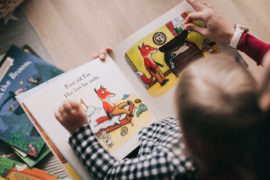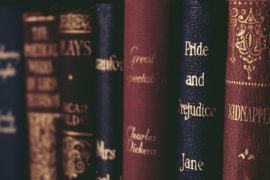Literary devices are tools that up-level the writing, gives it depth and makes it more impactful for readers. They help the writer to direct readers in the direction of interpreting the words the writer wants them to.
Literary devices help the writer to express their ideas in a more colorful way and takes the standard words up a notch. For example, authors use imagery to help convey their perception of writing to the reader appropriately. Some literary devices are:
1. Allegory:
An allegory is a narrative, whether in prose or verse, in which the agents and actions, and sometimes the setting as well, are contrived by the author to make a coherent sense of the literal or primary level of significations and at the same time to communicate a second, correlated order of significations. Allegory is a narrative strategy, which may be employed in any literary form or genre. Some famous examples of allegories are, Jonathan Swift’s Gulliver’s Travels, the voyage to Laputa and Legado is an allegorical satire directed mainly against philosophical and scientific pedantry.
John Keats makes subtle use of allegory throughout his ode To Autumn, most explicitly in the second stanza, which personifies the autumnal season as a female figure amid the scenes and activities of the harvest:
Who hath not seen thee oft amid thy store?
Sometimes whoever seeks abroad may find
Thee sitting careless on a granary floor,
Thy hair soft-lifted by the winnowing wind;
Or on a half-reap’d furrow sound asleep
2. Imagery:
It is used to signify all the objects and qualities of sense perception referred to in the
poem or other work of literature, whether by little description, by illusion, or in the vehicles of its similes and metaphors.
Some readers experience visual images while some do not. Among those who do, the explicit details of the pictures vary greatly. Imagery in this usage includes not only visual sense qualities but also qualities that are auditory, tactile, thermal, olfactory, gustatory and kinesthetic. For example, Tennyson’s imagery encompasses not only things that are visible but also qualities that are smelled, tasted, or heard, together with a suggestion, and adjective summer of warmth.
unloved, that beech will gather ground
And many a rose carnation feed
With summer spice the humming air

3. Alliteration:
It is the repetition of a speech sound in a sequence of nearby words. Usually, the term is applied only to consonants, and only when the recurrent sound is made emphatic because it begins a word or a stressed syllable within a word.
In later English, alliteration is used only for special stylistic effects, such as to reinforce the meaning, to link related words, or to provide tone coloor and enhance the culpability of enunciating the words. An example is the repetition of the letter ‘S’ that is:
in summer season, when soft was the sun
4. Allusion:
It is a passing reference, without explicit identification, to a literary or historical person, place, or event, or to another literary work or passage. See for example Thomas Nashe’s A
Litany in Time of Plague:
Brightness falls from the air,
queens have died young and fair,
dust had closed Helens eye
Helen in the last line alludes to Helen of Troy. Most allusions serve to illustrate or expand upon or enhances the subject but some are used in order to undercut it ironically by a discrepancy between the subject and the allusion.
5. Simile/metaphor:
In a simile, a comparison between two distinctly different things is explicitly indicated by a word like or as. A simple example is Robert Burns’ “oh my love is like a red rose”. The following simile from Samuel Taylor Coleridge The Rime of the Ancient Mariner also specifies the feature in which icebergs are said to be similar to emeralds:
and ice, mast high, came floating by
as green as emerald.
In a metaphor, a word or expression that is literal usage denotes one kind of thing is applied to a distinctly different kind of thing without asserting a comparison. For example, If Burns had said “oh my love is a red red rose”, he would have used, technically speaking, a metaphor instead of a simile.
Here is a more complex instance from Stephen Spender, in which you apply several metaphoric terms to the ice as it scans the landscape:
Eye, gazelle, Delicate wonderer
drinker of horizons fluid line.
Learn the art of writing with Ruskin Bond’s unluclass (Trailer below)
Ruskin Bond
Excel in the art of writing by taking this phenomenal online writing course by the legendary Ruskin Bond. With over 70 years of experience, Ruskin Bond needs no introduction. His exclusive online writing class on unlu, will provide you with the right guidance to become a good writer.







